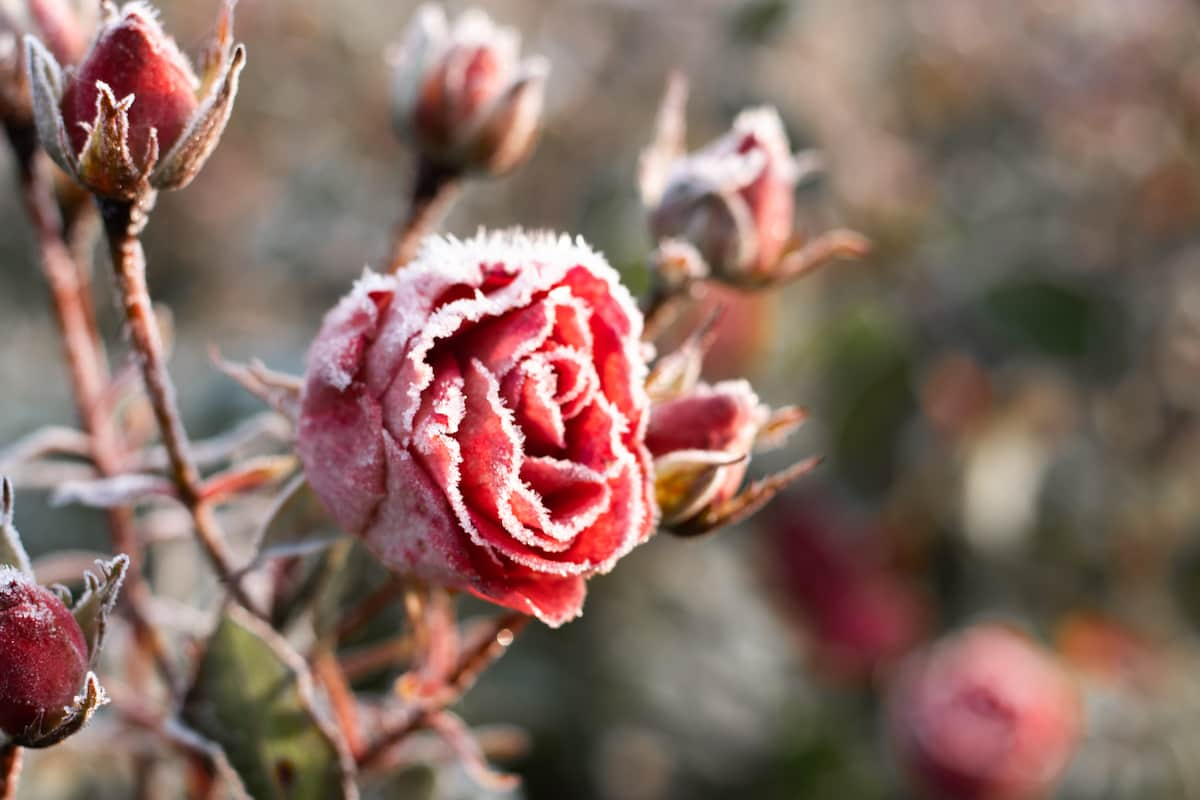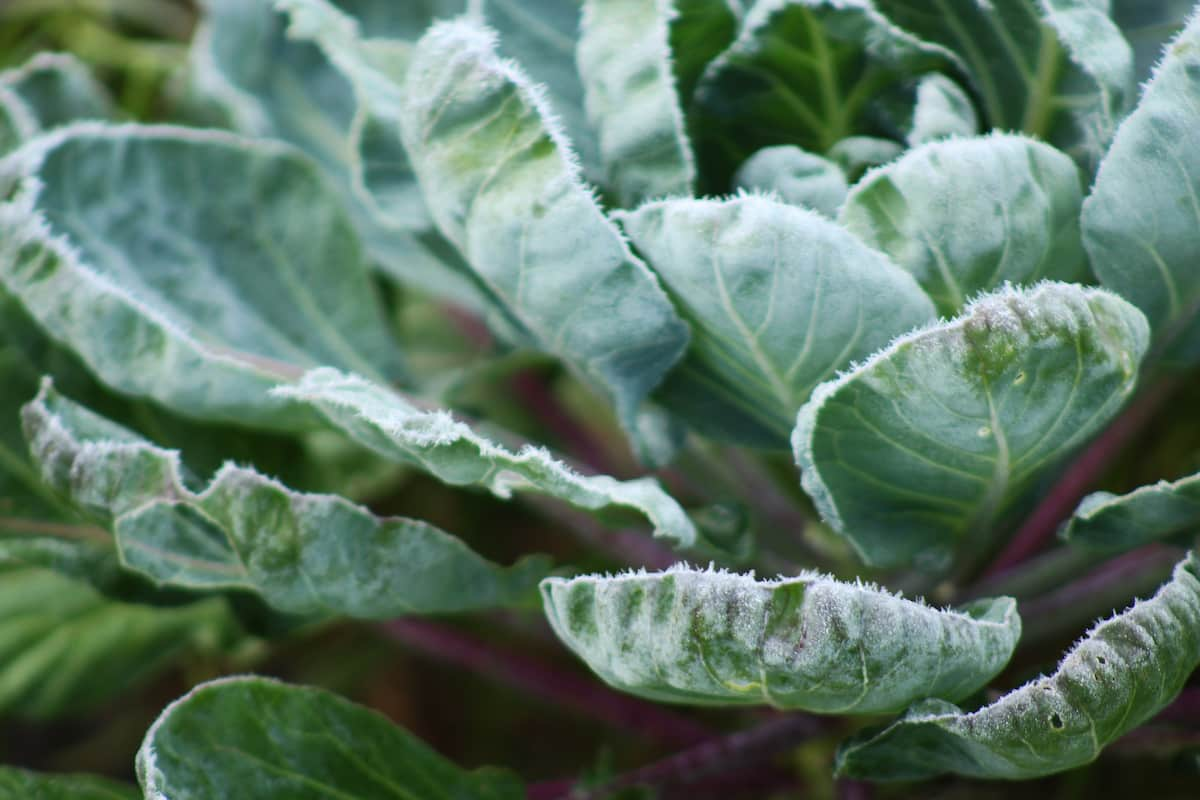Frost is a type of weather that can damage or kill plants. It happens when the temperature outside gets cold enough to freeze the water inside the plant cells. The cell walls break, and the plant dies. Frost can happen on clear, calm nights when the ground loses heat quickly. Frost can damage or kill any plant, but some are more sensitive than others. Vegetables, fruits, and herbs are particularly vulnerable. To protect your plants from frost, you must take some preventive measures.

These include covering your plants with a tarp or blanket, ensuring they have adequate water before the frost hits, and moving them indoors if possible. In colder climates, you may consider using foliar feeding products to promote growth and protect the plant against frost damage. Foliar feeding products work by supplying the plant with nitrogen, potassium, and other nutrients needed for healthy growth and protection against frost damage. These steps will help ensure that your plants survive the cold weather and continue to thrive.
How to Protect Your Garden from Frost
Bring Potted Plants Inside
When the temperatures start to dip, it’s time to start thinking about bringing your potted plants inside. Pick a place in your home that gets enough light for your plant. Give your plant’s pot a good cleaning and inspect it for any cracks or damage. You may also want to consider repotting into a larger pot if necessary. When you first bring your plant inside, put it in a spot that gets indirect sunlight and keeps an eye on it for a week or so. After that, you can move it to its final location. Once your plant is settled in, check it for any signs of pests such as insects or diseases. Treat accordingly if necessary.
Water Plants in the Afternoon
Watering plants in the afternoon is a great way to protect them from frost. Watering them in the afternoon allows the water to evaporate off the leaves and stems before nightfall. This will prevent the leaves and stems from freezing and help insulate the roots. Don’t water plants excessively when temperatures drop below freezing; doing so will only cause them to rot. Instead, water slowly and deeply when necessary to avoid standing water on the ground, which can form ice crystals.
In case you missed it: Epsom Salt Benefits for Your Garden Plants: Application Methods

Add a Thick Layer of Mulch
Mulch is an important layer of protection for your garden during the winter. It helps to insulate the ground, keeping it warmer and protecting your plants from the cold. A thick mulch layer will also help prevent frost damage to your plants. You should remember a few things when adding mulch to your garden. First, make sure that you add a thick layer of mulch. At least 4 inches is ideal, but 6-8 inches is even better. This will give your plants the best chance of surviving the cold winter.
Second, make sure that you apply the mulch evenly over the entire garden. You don’t want any bare spots where the ground is exposed. This could lead to frost damage or other problems. Third, make sure to use good-quality mulch. Some types of mulch break down quickly and won’t provide much protection for your plants. Finally, keep an eye on your garden throughout the winter. Add more if you see any areas where the mulch has been disturbed or blown away.
Cover Up Individual Plants with a Cloche
When the temperatures drop in autumn, it’s time to start thinking about protecting your garden from frost. One way to do this is to cover up individual plants with a cloche. A cloche is a bell-shaped plastic or glass covering that covers individual plants to protect them from the cold. You can buy them commercially or make your own out of recycled materials. Place a cloche over the plant you want to protect and secure it with a stone or brick.
Cloches are an effective way to protect tender plants from frost damage, but they can also extend the growing season by trapping warmth and moisture around the plant. This can be especially useful for starting seedlings outdoors in early spring. If you’re using cloches to protect plants from frost, remove them during the day, so the plant doesn’t overheat. And if you’re using them in spring to warm up the soil, be sure to remove them once the threat of frost has passed.
Give Them a Blanket
Bring your frost-sensitive plants indoors as the temperature drops at night, or cover them with a blanket. This will protect them from the cold and prevent frost damage. Give them a blanket if you have delicate plants that can’t be brought inside. Frost damage is often caused by the plant’s leaves coming into contact with cold air. Covering the plant with a blanket creates a barrier between the cold air and the plant, protecting it from the damaging effects of frost.
In case you missed it: How to Naturally Get Rid of Garden Pests Without Harming Your Plants: DIY Ideas and Tips

Wrap Your Trees
When temperatures dip in the fall, it’s time to start thinking about protecting your garden from frost. Bubble wrap or burlap sacks are both good options for wrapping trees. Make sure the tree is dry before wrapping it. Wet trees are more susceptible to frost damage. Wrap the tree loosely but not too tightly.
You want to allow airflow while providing insulation from the cold. Use supports to keep the wraps in place. This will prevent them from blowing away in the wind. Check on your wrapped trees regularly, especially after a storm or periods of high winds. Make sure the wraps are still in place and that there is no damage to the tree itself.
Conclusion
You should take several steps to keep your garden healthy and growing despite the cold weather. Protecting plants from frost is important, whether in the ground or pots on your patio. Remember that no specific method will work for everyone, so experiment until you find what works best for you and your garden.
- Feed Your Flock for Less: Top 10 Tips to Save on Chicken Feed
- Ultimate Guide to Ossabaw Island Hog: Breeding, Raising, Diet, and Care
- Hatching Answers: The Top 10 Reasons Your Chickens Aren’t Laying Eggs
- Eggs and Economics: Breaking Down the Cost of Raising Backyard Chickens
- Defend Your Greens: Proven Methods to Keep Iguanas Out of Your Garden
- Ultimate Guide to Cinnamon Queen Chicken: A Comprehensive Guide for Beginners
- Ultimate Guide to California Tan Chicken: Breeding, Raising, Diet, Egg-Production and Care
- Ultimate Guide to Marsh Daisy Chicken: Breeding, Raising, Diet, and Care
- 10 Types of Chicken Farming Businesses You Can Start for Profits